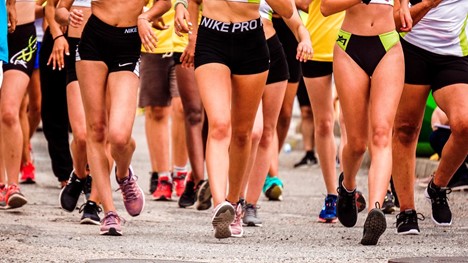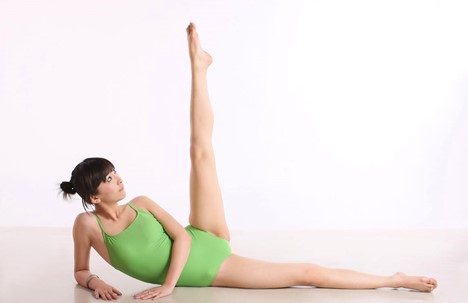Leg Overuse Injuries occur when our body’s regenerative power cannot cope with physical exertion, as commonly seen in “overdoing” activities in too short period of time. Pain, swelling, reduced sports performance are common features.
Typically, treatment takes weeks to months, accompanied by a high rate of recurrence. Research shows that more than 50 % of people who quit sport because of tendon pain still suffer from that pain 15 years later. Let’s take a look at common presentations and treatment options.
Definition
Overuse Injuries develop as a buildup of microtrauma injuries like small tears in fibers and connective tissue of the muscles as well as sprained ligaments, strained muscles, and overstretched tendons.
Microtraumas often cause swelling that you cannot notice at the beginning, but they can elicit pain, tenderness, erythema, stiffness and reduced sports performance by the time they mature.
Classifications
Bursitis (inflammation in the sac of fluid that cushions and lubricates the bones)
Tendinitis or Tendinopathy (inflammation and degeneration of the tough, ropey fibres that connect muscles to bones)
Stress fractures (hairline bone cracks, most commonly in the foot and tibia)
Periostitis (inflammation of the bone surface (periosteum) to which muscle fibres attach)
Plantar Fasciitis (inflammation of the broad, flat ligament on the bottom of the foot)
Causes
The following factor may increase the likelihood of overuse injuries:
- Inadequate recovery between training sessions
- Excessive high intensity training
- Sudden spike in distance, duration, or condition of training environment
- Incorrect training technique
- Maladaptation to new exercise equipment
- Suboptimal nutrition
- Poor body alignment, flat feet, high arch foot
- Poor flexibility
- Poor core control balance
- Certain medical conditions: diabetes, use of antibiotics
- Aging
Common Examples
- Achilles Tendinitis
- Patellar Tendinitis
- Runner’s Knee
- Jumper’s knee
- Greater Trochanteric Bursitis
- Plantar fasciitis
- Shin Splint
- Iliotibial band Syndrome
- Metatarsalgia
Presentation
Initially, there is no resting pain at baseline, but only occurs during or after physical activity. Symptoms behave very predictably, e.g. only aches after running a certain mileage, hiking so many hours.
As the condition worsens, it gets progressively easy to provoke pain and longer to subside, up to a point where daily non-athletic activities also become affected.
For instance, kneeling down to tie shoelaces, climbing stairs or getting out of a car after a long drive gets problematic.
In worst cases, static standing, normal walking or even fist few steps in the morning can prove to be excruciating.
By then, swelling and tenderness in affected areas could be quite tremendous. If untreated, pain can be so disabling that it disrupts sleep, work and emotion.
Diagnosis
Because of their hallmark presentation of pain, swelling and local tenderness, provoked by physical activity and relieved by rest, physical diagnosis can usually be made via clinical examination at office clinics.
Medical imaging like X-ray, Medical Resonance Imaging (MRI) or Ultrasonography do not typically add diagnostic value in most cases, and are usually reserved for tracking disease stage (as in stress fracture or compartment syndrome).
However, in cases where good treatment response is absent after adequate rest, further investigative imaging may be warranted.
What are the Treatment Options?
Early Stage
P.R.I.C.E. – protection by brace/splinting, rest by discontinuing activities, unloading with gait aids, icing, compression and elevation
Over-the-counter anti-inflammatory medications helps relieve symptoms
Corticosteroid injection, insoles & shockwave therapy provides short-term relief
Active rest with gentle stretching as supervised by health professionals
Reducing the intensity, duration, and frequency of sports
Later Stage
Exercise therapy for re-conditioning
Flexibility training
Balance training
Core Stability Training
Gait retraining
Exercise program modification (changing environment, timing, condition, volume, intensity)
Activity cycling
Exercise technique re-education (e.g. jumping, landing, cutting)
Nutrition Planning
Correct equipment fitting
What are ways to prevent overuse injuries?
Well-rounded training for all major muscle groups. Never be myopically focused on training for performance. Maintain a health perspective in training.
Adequate work-rest cycle in exercise programming. Notice signs of overreaching.
Gradually increase the duration, intensity and frequency of training. Use 10% rule for progression.
Advanced seasonal planning. Vary your exercise activities with cross training to balance out risk and benefits.
Insoles. There has been some evidence supporting its use to prevent leg overuse injuries, especially in military recruits.
Correct fit of equipment (rackets, clubs, bikes, shoes)
Seek for professional instruction on proper exercise form & equipment use
Any other cutting-edge technology against overuse injuries?
A novel framework of tendinopathy rehabilitation utilizing Tendon Plasticity Training (TNT) was first published by Dr. Ebonie Rio1 from La Trobe University in Australia in 2016, followed by some case report studies2 thereafter.
Preliminary results showed that combining heavy slow resistance exercise with external pacing provided by the audio-visual cues on a smartphone metronome can modulate central nervous system excitability, improving tendon tensile capacity and reducing motor control deficits.
In her original paper, training was done on non-consecutive days for eight consecutive weeks. It’s been touted that pain relief lasts for 45 minutes post-training.
Now, here’s one BIG CAVEAT: To date, we still have not seen large scale Randomized Controlled Trials (RCT) done on patients yet.
Most data we hear about TNT is a lopsided story from Dr. Rio’s PhD dissertation paper. In fact, I found another PhD dissertation paper3 from the Philippines, using a small scale RCT (20 patients with unilateral tennis elbow) to show that TNT is no superior to traditional eccentric exercise.
Personally, I wouldn’t put money on TNT…
CONCLUSION:
There’s been emerging evidence revealing overuse injuries like Achilles and Patellar tendinopathies actually happen in both legs or even the whole body.
Deficiency in core stability/endurance would also contribute to various leg acute4 and overuse5 injuries.
No wonder why traditional leg-focused treatment has produced lackluster result thus far. On the contrary, core training is becoming a promising tool in preventing and treating lower limb injuries6.
Have you tried it before? Share you stories with us below. Or read success stories in our book.
References:
- Rio, E., Kidgell, D., Moseley, G. L., Gaida, J., Docking, S., Purdam, C., & Cook, J. (2016). Tendon neuroplastic training: changing the way we think about tendon rehabilitation: a narrative review. British journal of sports medicine, 50(4), 209-215.
- Welsh, P. (2018). Tendon neuroplastic training for lateral elbow tendinopathy: 2 case reports. The Journal of the Canadian Chiropractic Association, 62(2), 98.
- Oaferina, K. S. P. (2017). Comparison on the Effectiveness of Tendon Neuroplastic Training (TNT) Vs Eccentric Exercise in Treating Patients with Lateral Epicondylalgia (Doctoral dissertation, University of Santo Tomas).
- Wilkerson, G. B., Giles, J. L., & Seibel, D. K. (2012). Prediction of core and lower extremity strains and sprains in collegiate football players: a preliminary study. Journal of athletic training, 47(3), 264-272.
- Chuter, V. H., & de Jonge, X. A. J. (2012). Proximal and distal contributions to lower extremity injury: a review of the literature. Gait & posture, 36(1), 7-15.
- Herman, K., Barton, C., Malliaras, P., & Morrissey, D. (2012). The effectiveness of neuromuscular warm-up strategies, that require no additional equipment, for preventing lower limb injuries during sports participation: a systematic review. BMC medicine, 10(1), 75.



